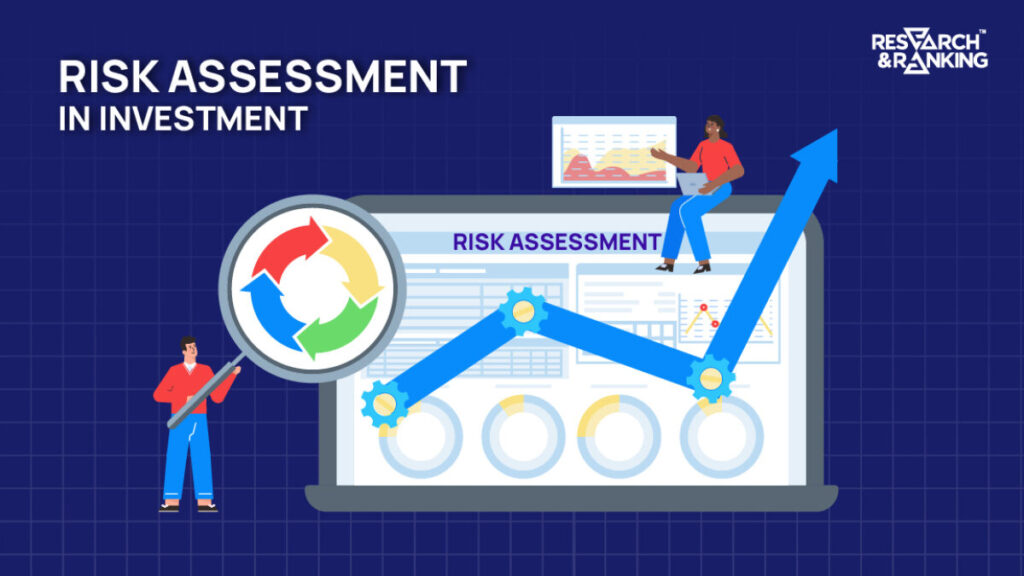Investing can be a lucrative endeavor, but it’s not without its challenges. One of the most crucial aspects of successful investing is understanding and managing risk. Without proper risk assessment, investors expose themselves to potential losses that could jeopardize their financial goals. In this article, we’ll delve into the world of investment risk assessment, exploring its importance, various types, assessment techniques, management strategies, tools, common mistakes, and real-life examples.

1. Introduction to Investment Risk Assessment
Investment risk assessment is the process of evaluating the potential risks associated with an investment to make informed decisions. It involves analyzing various factors that could impact the performance of an investment, such as market fluctuations, interest rates, creditworthiness, inflation, and liquidity.
2. Types of Investment Risks
Market Risk
Market risk, also known as systematic risk, refers to the risk of losses due to factors affecting the overall market, such as economic downturns, geopolitical events, and industry trends.
Interest Rate Risk
Interest rate risk arises from changes in interest rates, affecting the value of fixed-income investments such as bonds and certificates of deposit.
Credit Risk
Credit risk pertains to the possibility of the issuer defaulting on its financial obligations, leading to losses for the investor holding the debt instruments.
Inflation Risk
Inflation risk results from the erosion of purchasing power over time, diminishing the real returns on investments.
Liquidity Risk
Liquidity risk arises when an investor encounters difficulty selling an investment without causing a significant impact on its price.
3. Risk Assessment Techniques
Quantitative Analysis
Quantitative analysis involves using mathematical models and statistical tools to assess risk, such as calculating standard deviations, beta coefficients, and value-at-risk (VaR).
Qualitative Analysis
Qualitative analysis relies on subjective judgment and qualitative factors to evaluate risk, considering factors such as industry dynamics, management quality, and regulatory environment.
4. Risk Management Strategies
Diversification
Diversification involves spreading investments across different asset classes, sectors, and geographic regions to reduce the impact of any single risk factor.
Asset Allocation
Asset allocation entails determining the optimal mix of asset classes in a portfolio based on factors such as risk tolerance, investment objectives, and time horizon.
Hedging
Hedging involves using financial instruments such as options, futures, and derivatives to mitigate specific risks within a portfolio.
5. Tools and Resources for Risk Assessment
Financial Models
Financial models, such as discounted cash flow (DCF) analysis and Monte Carlo simulations, help investors quantify and analyze various risk scenarios.
Risk Assessment Software
Risk assessment software provides tools and algorithms to streamline the risk assessment process, enabling investors to analyze and manage risks more effectively.
6. Case Studies: Real-life Examples of Risk Assessment
Explore real-life case studies showcasing how effective risk assessment techniques and strategies have helped investors navigate challenging market conditions and achieve their investment objectives.
7. Common Mistakes to Avoid in Risk Assessment
Learn about common pitfalls in risk assessment, such as overreliance on historical data, ignoring tail risks, and neglecting qualitative factors, and how to avoid them.
8. Conclusion
Mastering investment risk assessment is essential for investors to safeguard their capital and maximize returns. By understanding the various types of risks, employing robust assessment techniques, implementing effective risk management strategies, and leveraging tools and resources, investors can navigate uncertainties and achieve their financial goals with confidence.
FAQs (Frequently Asked Questions)
- What are the key benefits of conducting investment risk assessments? Conducting investment risk assessments allows investors to identify and evaluate potential risks associated with their investments, enabling them to make informed decisions and mitigate potential losses. It also helps in optimizing portfolio performance and achieving long-term financial goals.
- How often should investors review and update their risk assessment strategies? Investors should regularly review and update their risk assessment strategies, taking into account changes in market conditions, investment objectives, and personal circumstances. It’s recommended to conduct a comprehensive review at least annually or whenever there are significant changes in the investment landscape.
- Can risk assessment techniques be applied to different types of investments? Yes, risk assessment techniques can be applied to various types of investments, including stocks, bonds, mutual funds, real estate, and alternative investments. The principles of risk assessment remain consistent across different asset classes, although the specific risks and factors to consider may vary.
- What role does diversification play in mitigating investment risks? Diversification is a fundamental risk management strategy that involves spreading investments across different asset classes, sectors, and geographic regions. By diversifying their portfolios, investors can reduce the impact of any single risk factor and potentially enhance risk-adjusted returns. It helps in minimizing the correlation between assets, thus reducing overall portfolio volatility.
- Are there any regulatory requirements for conducting investment risk assessments? Regulatory requirements for investment risk assessments may vary depending on the jurisdiction and type of investment. In some cases, regulatory bodies such as securities commissions and financial regulators may mandate certain risk assessment practices for investment firms and financial institutions to ensure investor protection and market integrity.




